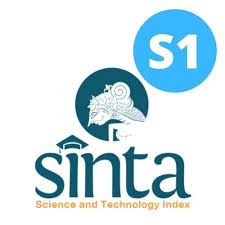THE GENUS CYMBOPOGON SPRENGEL (GRAMINEAE)
Abstract
Keywords
Full Text:
PDFReferences
ANDERSON, E. (1949). Introgressive hybridization. New York.
ANDERSSON, N. J. (1856). Monographiae Andropogonearum I. Anthistiriae. In Nova Acta Soc. Sci. Upsal. Ill, 2: 229-255.
ARBER, A. (1934). The Gramineae. A study of cereal, bamboo and grass. Cambridge.
AVDULOV, N. (1931).. Karyosystematische Untersuchung der Familie Gramineen. In Bull. Appl. Bot. PL-Breed., Suppl. 44: 1-428.
BARNARD, C. (1957). Floral histogenesis in the Monocotyledons. I. The Gramineae. In Austr. J. Bot. 5: 1-20.
BARNARD, C. (1964). Grasses and grasslands. London.
BENTHAM, G. & HOOKER, J. D. (1883). Genera Plantarwm S. London.
BEWS, J. W. (1925). Plant form, and their evolution in South Africa. London.
BEWS, J. W. (1929). The world's grasses. London.
BLAKE, S.T. (1969). Taxonomic and nomenclatural studies in the Gramineae. — 1. In Proc. Roy. Soc. Queensl. 80(6): 55-84.
BLAKE, S.T. (1974). Revision of the genera Cymbopogon and Schizachyrium. In Contr. Queensl. Herb. 17: 1-70.
BLANE, G. (1790). Nardus indica or spikenard. In Phil. Trans. 80: 284.
BOR, N. L. (1953). The genus Cymbopogon in Burma, Ceylon and India. In J. Bombay Nat. Hist. Soc. 51: 890-916.
BOR, N. L. (1954). The genus Cymbopogon in Burma, Ceylon and India (Cont.). In .1. Bombay Nat. Hist. Soc. 52: 149-183.
BOR, N. L. (1960). Grasses of Burma, Ceylon and India. London.
BOR, N. L. (1963). A new name in Cymbopogon Spreng. In Notes Roy. Bot. Gard. Edinburg 25: 63.
BOK, N. L. (1968). Gramineae. In C. C. TOWNSEND et al., Flora of Iraq 9. Baghdad.
BOSSER. J. (1969). Graminees des paturages et des cultures a Madagascar. Paris.
BROWN, R. (1810). Prodromus florae Novae Hollandiae. London.
BROWN, W. N. (1958). Leaf-anatomy in grass systematics. In Bot. Gaz. 119: 170-179.
BURBIDGE, N. T. (1960). The phytogeography of the Australian region. In Austr. J. Bot. 8(2) : 75-211.
BURKILL, I. H. (1909). First notes on Cymbopogon martinii Stapf. In J. Asiat. Soc. Beng. 5: 89-93.
BURKILL, I. H. (1935). A dictionary of the economic products of the Malay Peninsula. London.
BtiRTT-DAVY, J. & POTT-LEENDERT, R. (1912). A first check-list of the flowering plants and ferns of the Transvaal and Swaziland. In Ann. Transv. Mus. 3(3) : 119-122.
CAMUS, A. (1920). Notes sur quelques Cymbopogon odor ants (Gramineae). In Bull. Mus. Hist. Nat., Paris 26: 562-566.
CAMUS, A. (1921). Ies Andropogonees odorantes des regions tropicales. In Rev. Bot. Appl. Colon. 1: 270-306. .
CAMUS, E.G. & A. (1922). Graminees. In LECOMTE, Flore Generate de I'lndo-Chine 7. Paris.
CARLQUIST, S. (1967). The biota of long distance dispersal. V. Plant dispersal to Pacific Islands. In Bull. Torrey Bot. Club 94: 129-162.
CELARIER, R. P. (1956). Additional evidence for five as the basic chromosome number on the Andropogoneae. In Rhodora 58: 135-143.
CHEN, C. C. & Hsu, C. C. (1962). Cytological studies on Taiwan grasses. 2. Chromosome numbers of some miscellaneous tribes. In J. Jap. Bot. 37(10) : 300-313.
CHIOVENDA, E. (1909). Intorno ad alcune Graminaceae da essenze ed a quelle de la colonia Eritrea. Roma.
CLAYTON, W. D. (1964). Studies in the Gramineae V. In Kew Bull. 17: 465-285.
CLAYTON, W. D. (1965). Studies in the Gramineae VII. In Kew Bull. 19: 454-455.
CLAYTON, W. D. (1969). A revision of the genus Hyparrhenia. In Kew Bull., Add. ser. 2.
CLAYTON, W. D. & HEPPER, F. N. (1974). Computer-aided chorology of West African grasses. In Kew Bull. 29: 213-234.
CLAYTON, W. D. & PANIGRAHI, G. (1974). Computer-aided chorology of Indian grasses. In Kew Bull. 29: 669-689.
COULTER, J. M., BARNES, C. R. & CLOWES, H. C. (1931). A. textbook of botany 3. Ecology. New York.
EDWARDS,. D. C. & BOGDAN, A. V. (1951). Important grassland plants of Kenya. Nairobi.
FAHN, A. (1967). Plant anatomy. Oxford.
FERNANDO. S. N. O. (1968). The natural vegetation of Ceylon. Colombo.
GILLILAND, H. B. (1971). Flora of Malaya 5. Gramineae. Singapore.
GOOD, R. (1964). The geography of the flowering plants. London.
GOULD, F. W. (1956). Chromosome counts and cytotaxonomic note on grasses of the tribe Andropogoneae. In Amer. J. Bot. 43: 395-404.
GOULD, F. W. (1968). Grass systematics. New York.
GUENTHEE, E. (1950). The essential oils S. New York.
GUPTA, B. K. (1969a). Studies in the genus Cymbopogon Spreng. II. Chemocytotaxonin Indian Cymbopogon. In Proc. Indian Acad. Sci. sect. B 70: 80-87.
GUPTA, B. K. (1969b). Studies in the genus Cymbopogon Spreng. I. Chromosome studies omic studies in Indian Cymbopogon. In Proc. Indian Acad. Sci. sect. B70: 241-247.
HACKEL, E. (1878). Gramineae II. Andropogoneae, Tristegineae. In C. F. P. MARTIUS & A.. G. EICHLER, Flora Brasiliensis II, 3. Munchen.
HACKEL, E. (1889). Andropogoneae. In A. P. DE CANDOLLE, Monographiae Phanerogamarum 6. Paris.
HANDEL-MANZZETI, H. (1936). Symbolae Sinicae 7. Wien.
HARTLEY, W. (1958). Studies on the origin, evolution, and distribution of the Gramineae I. The tribe Andropogoneae. In Austr. J. Bot. 6: 116-128.
HENTY, E. E. (1969). A manual of the grasses of New Guinea. Lae.
HEYNE, K. (1927). De nuttige planten van Nederlandsch Indie. Buitenzorg.
HOLMES, C. H. (1951). The grass and savanna lands of Ceylon, their nature and ecological significance. Oxford.
HUBBARD, C. E. (1934). Monocotyledons. In J. HUTCHINSON, Families of flowering plants. Oxford.
JANAKI AMMAL, E.K. & GUPTA, B. K. (1966). Oil content in relation to polyploidy in Cymbopogon. In Proc. Indian Acad. Sci. ser. B 64: 334-335.
JONES, W. (1795). Additional remarks on the spikenard of the ancients. In Asiat. Res. 4: 109-118.
JOWITT, J. E. (1908). Notes on the Dr. Otto Stapf's nomenclature of Cymbopogon nardus Rendle and C. confertiflorus Stapf. In Ann. Roy. Bot. Gard. Perad. 4: 185-192.
LAZARIDES, M. (1970). The grasses of Central Australia. Canberra.
LOOGEN, J (1942). De zuidhelling van de Smeroe. In Trop. Natuur 31: 14-17.
MEHRA, K. L., SUBRAMANYAM, K. N. & SAMINATAN, M.S. (1962). Cytogenetical studies in some members on Andropogoneae. In J. Indian Bot. Soc. 41: 491-502.
MEHRA, P. N. & SHARMA, M. L. (1972). In A. Love, IOPB chromosome number reports 36. In Taxon 21(2/3) : 340-341.
METCALPE, C. R. (1960). Anatomy of monocotyledons. I. Gramineae. Oxford.
MEUSEL, H.,JAGER, E. & WEINERT, E. (1965). Vergleichende Chorologie der zentraleuropischen Flora. Jena.
MONOD DE FROIDEVILLE, CH. (1968). Poaceae. In C. A. BACKER & R. C. BAKHUIZBN VAN DEIN BRINK JR., Flora of Java, 3. Groningen.
MOORE, C. W. E. (1964). Distribution of grasslands. In C. BARNARD, Grasses and grasslands. London.
MORTON, C. V. (1957). Nomenclature proposals for the Montreal Congress. In Taxon 8: 11-16.
PILGER, R. (1940). Gramineae III. Panicoideae. In A. ENGLER & K. PRANTL, Die naturlichen Pflanzenfamilien He. Leipzig.
PRAKASH, M. & CHOWDHARY, M. (1957). Reclamation of sand dunes in Rajasthan. In Indian For. 83: 492-496.
PRAT, H. (1932). L'Epidermie de Gramineae etude anatomique et systematique. In Ann. Sri. Nat., Bot. X, 10: 117-234.
PRAT, H. (1960). Vers une classification naturelle des Gramineae. In Bull. Soc. Bot. Pr. 109: 32-79.
RAGHAVAN, R. S. & ARORA, CM. (1958). Chromosome numbers in Indian medicinal plants III. In Proc. Indian Acad. Sci. ser. B 47: 352-358.
RENDLE, A. B. (1899). Catalogue of the African plants collected by Dr. Friedrich Wblwitsch. London.
ROBBINS, R. G. (1960). The anthropogenic grasslands of Papua and New Guinea. In Proc. UNESCO Symposium on the impact of man on humid tropic vegetation, Goroka: 313-329.
SCHNELL, R. (1962). Remarques preliminaires sur quelques problemes phytogeographique du Sud-Est Asiatique. In Rev. Gen. Bot. 69: 301-366.
SCHWEINPURTH, G. (1867). Beitrag zur Flora Aethiopiens. Berlin.
SEALEY, R. (1958). A revision of the genus Camellia. London.
SMITH, A. C. (1967). The presence of primitive angiosperms in the Amazon basin and its significance in indicating migrational routes. In At. Simp. Biota Amaz. 4 (Bot.) : 37-59.
SPRENGEL, C. (1815). Plantarum minus pugillus 2. Halae.
STAPF, O. (1906). The oil grasses of India and Ceylon. In Kew Bull. 1906: 298-363.
STAPF, O. (1918-1919). Gramineae. In D. PRAIN, Flora of Tropical Africa 9. Ashford.
STEBBINS, G. L. (1956). Cytogenetics and the evolution of the grass family. In Amer. J. Bot. 43: 890-905.
STEBBINS, G. L. (1971). Chromosomal evolution in higher plants. London.
STEBBINS, G. L. & CRAMPTON, B. (1961). A suggested revision of the grass genera of temperate North America. In Recent Advanc. Bot. 133-145.
STEENIS, C. G. G. J. VAN (1961). Malaysian Papilionaceae I. Introduction. In Reinwardtia 5: 420-429.
STEENIS, C. G. G. J. VAN (1965). Concise plant geography of Java. In A. C. BACKER & R. C. BAKHUIZEN VAN DEN BRINK JR., Flora of Java 2. Groningen.
STEENIS, C. G. G. J. VAN (1972). Mountain flora of Java. Leiden.
STEWART, D. R. M. (1965). The epidermal characters of grasses with special reference to East African species. In Bot. Jahrb. 84: 63-174.
TATEOKA, T. (1957). Proposition of a new phylogenetic system of Poaceae. In J. Jap. Bot. 32: 275-287.
TATEOKA, T. (1965). Chromosome numbers of some East African grasses. In Amer. J. Bot. 52: 864-869.
TATEOKA, T., INOUE, S. & KAWANO, S. (1959). Notes on some grasses XIX. Systematic significance of bicellular microhairs of leaf epidermis. In Bot. Gaz. 121: 80-91.
TURNER, P. (1895). Australian grasses 1. Sydney.
UPHOF, J. C. TH. (1968). Dictionary of economic plants. New York.
WATT, J. M. & BREYER-BRANDWIJK, M. G. (1932). The medicinal and poison plants of Southern Africa. Edinburgh.
WET J. M. J. DE (1954a). Chromosome number of a few Southern African grasses. In Cytologia IS: 97-103.
WET, J. M. J. DE (1954b). Stomatal size as a cytological criterion in Danthonia. In Cytologia 19: 176-181.
WET, J. M. J. DE & ANDERSON, L. J. (1956). Chromosome numbers in Transvaal grasses. In Cytologia 21: 1-10.
WHYTE, R. O. (1957). The grasslands and fodder resources of India. New Delhi.
WILD, H. (1965). Additional evidence for the African-Madagascar-India-Ceylon landbridge, with special reference to the genera Anisopappus and Commiphora. In Webbia 19:'497-505.
ZOHARY, M. (1973). Geobotanical foundation of the Middle East 2. Stuttgart.
Refbacks
- There are currently no refbacks.









